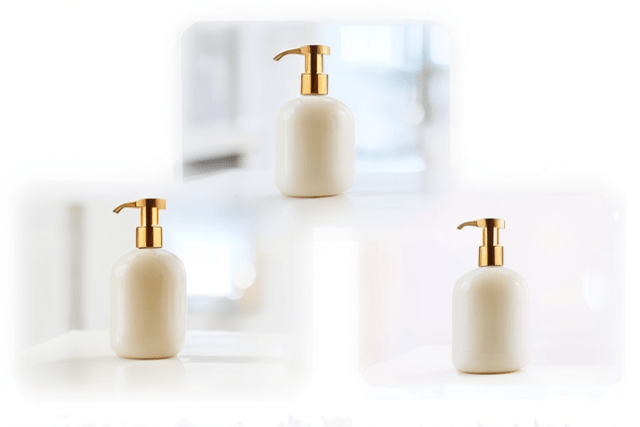There are some user-friendly tools for you to set a picture background white:
- ImgCreator.ai
- Adobe Express
- Remove.bg
- Fotor
Our surroundings influence our mood and mindset. Similarly, the digital environments we engage with on our screens can either elevate our experience or hinder it. Have you ever found peace in a minimalist aesthetic? If not, let’s embark on this enlightening journey together.
Introduction to White Backgrounds
The digital landscape today offers a myriad of colors, designs, and animations. Amidst all the razzle-dazzle, there’s a quiet allure in the simplicity of white-themed backgrounds. Just as Marie Kondo preaches the joy of decluttering physical spaces, digital decluttering, particularly with serene white backgrounds, can spark joy in your daily interactions with technology.

Why Choose a White Background?
Minimalist Aesthetic
Clean. Crisp. Calm. A white background is not just a design choice; it’s a lifestyle shift. It echoes the principles of minimalism, where less is indeed more. It’s the digital equivalent of a blank canvas, where the possibilities are endless. Just as a simple white room can be transformed with just a few pieces of furniture or decor, a white background on your device allows your content and apps to shine.
Focus on Content
In an age where attention spans are continually shrinking, a white background serves as an unobtrusive stage for your content. It amplifies the visibility of your icons, apps, notifications, and other vital elements. Essentially, it reduces digital noise, enabling you to focus on what’s crucial. Remember the times you’ve felt overwhelmed looking at a busy web page? A white background is the antidote to such chaos.

Using the right tools, setting your background white is an easy task. Let’s dive deeper into these. Please read on.
ImgCreator
It’s not just another image editing tool; it’s a canvas for your creativity.
Features of ImgCreator
ImgCreator boasts an extensive library of filters, tools, and presets. With its intuitive interface, you can:
- Adjust the background hue, saturation, and brightness.
- Tweak shadows and highlights.
- Introduce gradients for a more dynamic look.
- Preview your edits in real time.

ImgCreator Pro vs Free Version
ImgCreator isn’t just a tool, but rather a digital canvas awaiting your masterpiece.
- Free Version: Offers basic features suitable for simple projects.
- Pro Version: Unlocks a suite of advanced features tailored for professionals. The Pro version also provides high-resolution export options, ensuring the white in your image is crisp and clear.
User Community and Support
ImgCreator boasts a robust community where users share tips, tricks, and tutorials. If white backgrounds are your interest, there’s likely a forum or group dedicated solely to that!
Adobe Express
Adobe’s legacy of providing stellar digital editing tools shines through in Adobe Express.
Simple Steps with Adobe Express
- Upload your image: Select from your device or cloud storage.
- Head to the “Edit” panel: Here lies a treasure trove of tools.
- Adjust brightness and exposure: Aim for natural lighting.
- Use the whitening tool: This isn’t just for teeth! It can subtly transform your background to a whiter shade without making it appear artificial.
- Play with the highlights: This can add depth to your white background, making it pop.
Adobe’s array of tools is nothing short of legendary. Adobe Express combines this legacy with modern requirements.
Plugins and Extensions
Adobe Express can be integrated with other Adobe suite products, enabling seamless transfers and edits across platforms. The synergy between Adobe tools means you can perfect that shade of white to match your vision.
Learning Curve
While it’s user-friendly, mastering Adobe Express takes time. Adobe offers webinars, courses, and tutorials to help users navigate and utilize the full potential of the platform.
Remove.bg
In the world of background removal, Remove.bg is the unparalleled champion.
How Remove.bg Works
- Upload: No need for selecting or highlighting. The AI does it all.
- Automatic Removal: In seconds, watch the background vanish.
- Choose a new background: Opt for pure white or explore other presets.
- Download: Save in various resolutions and formats.
The magic of Remove.bg is its razor-sharp focus on doing one thing perfectly: background removal.
Behind the Tech
Remove.bg’s AI undergoes constant training, improving its accuracy and efficiency. It’s not just about removing backgrounds but doing so with finesse, preserving every hair strand or pattern detail against the white backdrop.
Step-by-Step Guide to Setting a Picture as Your Background
After mastering the art of creating the perfect white-themed image, it’s time to showcase it on your screen.
- Choose your desired image: Preferably, high resolution.
- Edit: Use the tools above to craft the perfect white backdrop.
- Save: Always of the highest quality.
- Go to Settings: On most devices, this is where magic happens.
- Select ‘Background’ or ‘Wallpaper’: The nomenclature might vary.
- Upload and Set: Revel in your new pristine environment.
Tips and Tricks
- High-Contrast Images Work Best: They stand out beautifully against a white backdrop.
- Consistent Aesthetic: Ensure all your icons and widgets align with the minimalist theme.
- Regular Refresh: While white is timeless, an occasional change keeps things fresh.
Trends in White-Themed Backgrounds
The use of white-themed backgrounds is not just a fleeting trend but rather a timeless classic. However, its application and style have seen variations over the years.
Photography and White Backgrounds
Photographers often prefer white backgrounds for portraits as they draw focus to the subject. But recent trends show a rise in high-key photography, where the subject and the background are both bright, often white, creating an ethereal look.
Web Design and White Space
In web design, white space (negative space) isn’t necessarily ‘white’. It refers to the unmarked space between different elements. The strategic use of white space can improve readability and user experience.
White in Branding
Big brands often utilize white in their branding and advertisements. Apple, for instance, often uses white backgrounds in their product launches, emphasizing the product’s features.
Conclusion
White backgrounds, while seemingly ordinary, can revolutionize your digital experience. With today’s tools, the journey from a cluttered screen to a minimalist oasis is just a few clicks away. So, are you ready to transform your digital landscape?
FAQs
- Is white not too bright for the eyes?
Most devices offer a “warm” or “comfort” mode to reduce strain. Use this in conjunction with your white background. - Can I use these tools in any image format?
Most commonly used formats like JPG, PNG, and GIF are supported. - Do I need professional skills to use these tools?
Not at all! They cater to both novices and professionals. - How do I handle images with shadows if I want a white background?
Tools like Adobe Express let you tweak shadows to blend seamlessly. - Are there any alternatives to the tools mentioned?
Certainly! The digital realm is abundant with image editing tools. However, these are among the best in the industry.
Read More about White Background
The Historical Significance of White in Design
White has been a cornerstone in design, art, and architecture for millennia. From the pristine marble of ancient Greek temples to the modern minimalist designs of today, white stands as a testament to elegance and purity.
White in Ancient Civilizations
In ancient Egypt, white was associated with purity and omnipotence. Priests wore white robes, and the use of white was prevalent in sacred ceremonies.
Meanwhile, in ancient Greece and Rome, buildings and statues were often made of white marble. Contrary to popular belief, while many of these structures and statues are white today, they were originally colorful. However, as paint faded over time and the white stone underneath was exposed, the association of these cultures with the color white grew.
White in Modern Design
The modern minimalist movement, championed by designers in the 20th century, made white a staple in contemporary design. It signified simplicity, clarity, and function over form. Brands like Apple have leveraged the power of white in their designs, emphasizing a clean and user-centric approach.
Case Studies: The Power of White
Apple: Pioneering White Design
Steve Jobs’s penchant for Zen Buddhism and minimalist design is evident in Apple’s design choices. The white aesthetic, from iPods to the Apple store’s architecture, emphasizes usability and elegance. This approach made their products not just gadgets, but pieces of art.
Scandinavian Design
Originating from the Nordic countries, Scandinavian design is characterized by simplicity, minimalism, and functionality. White is used extensively, paired with neutral tones and natural elements. This design philosophy accentuates space, light, and modernity.
Japanese Minimalism
Taking cues from traditional Zen principles, Japanese minimalism revolves around the idea of “Ma” (negative space). White plays a significant role, highlighting emptiness as an active element of design.
Psychology of White
White, in psychology, is often seen as a blank slate, representing a beginning or an opportunity for transformation. It’s associated with purity, innocence, and completeness. In design, a white background can provide a mental breather, allowing the viewer’s eyes to focus on the content without unnecessary distractions.
Pros and Cons of a White Background
Pros:
- Enhances readability.
- Highlights other design elements.
- Evokes feelings of cleanliness and simplicity.
Cons:
- Can seem stark or cold without complementary design elements.
- Potential for higher battery consumption on certain screen types.
- May highlight imperfections or low-quality images.
Embracing a white-themed background is akin to appreciating a blank canvas. It’s the anticipation of a new beginning, the calm before the storm, and the quiet in a world of noise. With our ever-evolving digital interaction, isn’t it refreshing to go back to basics sometimes?
Challenges with White Backgrounds
White isn’t just a color; it’s a design statement. However, using it comes with its set of challenges.
Perception of Different Screens
White might look different across screens, depending on calibration. An image that looks perfectly white on your monitor might have a blue or yellow tint on another device.
Dirt and Imperfections
White backgrounds can be unforgiving. Every speck of dust and every minor imperfection can stand out. It demands precision and cleanliness, especially in physical settings like photo studios.
Conclusion: The Art and Science of White
Harnessing the power of white is both an art and a science. It requires an understanding of tools, trends, and techniques but also an innate sense of design and aesthetics. Whether you’re a brand aiming to make a statement, a photographer looking to highlight a subject, or just someone wanting a serene background for your device, white offers endless possibilities.
“In the world of colors, white is a silent yet powerful orchestra, playing a symphony that resonates with clarity, simplicity, and elegance.”
